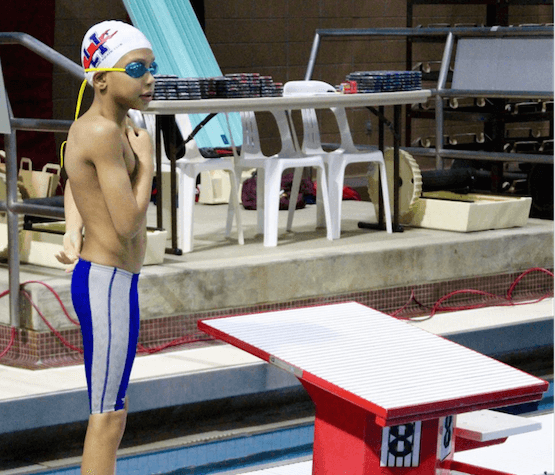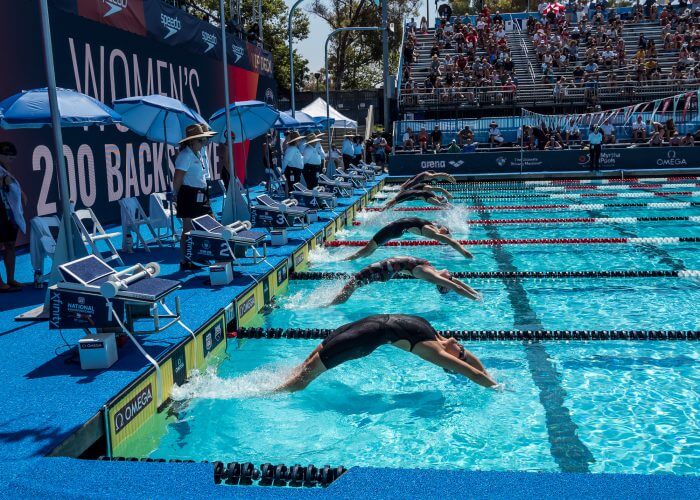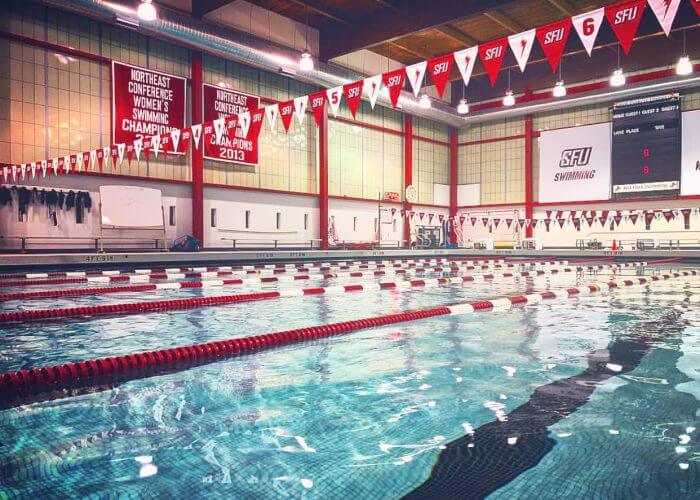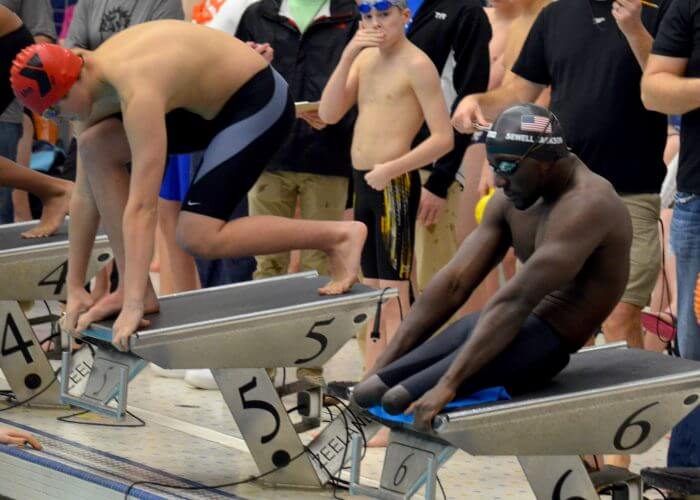The 411 on USA Swimming’s Rules and Regulations Amendments

By Ryan Gibbons, Swimming World College Intern.
Last month at the United States Aquatic Sports Convention in Jacksonville, Fla., USA Swimming’s House of Delegates voted on a number of amendments to the national Rules and Regulations – the document containing most of the laws governing swimming nationwide. As these amendments will begin to become noticeable throughout the swimming community, they are explained below in layman’s terms.
While many of the amendments passed each year at the Convention are administrative and may go unnoticed by most athletes, a number of items passed this year will be quite noticeable throughout the sport. From increasing inclusion for transgender athletes to banning tech suits for 12 & unders, the House of Delegates’ decisions will be prominent aspects of the sport in coming years.
The following list includes all of the amendments to the Rules and Regulations that were proposed to the House of Delegates. Their numbers, listed as “R-#” (standing for rules) or “HK-#” (standing for housekeeping), are listed in bold. Their formal description – the name given by the group proposing the amendment – is italicized. All amendments were passed unless otherwise noted.
Notable Amendments
The following amendments are those that will be greatly noticeable for swimmers and coaches upon their implementation. They are not necessarily more important than any others, but they will be the most prominent in the sport.
- R-1: To support a sport culture of inclusion and diversity, while assuring a fair competitive
environment and seeking a national directive that does not permit modification at the
local level. Provides further protections for transgender athletes by allowing athletes to choose their stated gender, change their gender in the national database, and to compete while under eligibility protests. Also adds “gender identity” to the list of traits protected from discrimination. - R-2: To establish definition of age for postponed meets. If a meet is postponed to less than 14 days from the originally scheduled dates, athletes may compete under their age as of the originally scheduled meet.

Photo Courtesy: Taylor Brien
- R-3: To ban the use of technical suits by 12 & under swimmers. Prohibits the wearing of tech suits (defined as suits with “bonded or taped seams” or “woven fabric extended to the knee or mid-thigh”) by 12 & under swimmers, except at Junior Nationals, Nationals, and the Olympic Trials. This goes into effect in September 2020.
- R-4: WITHDRAWN (with passage of R-3): To allow an LSC the ability to ban the use of technical suits by 12 & under swimmers provided such policy has been adopted by the LSC’s House of Delegates. This would allow LSCs to establish their own policies on 12 & under tech suit bans provided the national ban did not pass (which it did).
- R-9: To provide host clubs and LSCs the ability to include sponsorship from alcohol brands for non-swimming competition functions (e.g. fundraisers) and to allow alcohol brands to include sponsorship for specific senior level competitions. Would allow clubs or LSCs to be sponsored by a company affiliated with alcohol production, or to host events affiliated with such companies. For example, with approval from USA Swimming, an LSC could host a banquet at a winery. NOTE: The sale of alcohol at high-level Championship Series events was already legal; this provision would allow for their sponsorship of such events as well.

Photo Courtesy: Peter H. Bick
- R-10: To ensure when backstroke ledges are used that all lanes will have ledges and that all ledges will be identical. Ensures that all swimmers will use equal and identical backstroke ledges (more of a housekeeping rule, as the provision already exists for starting blocks).
- R-11: To comply with FINA requirements for 15 meter markings. Will require all pools to create a mark on the pool deck or facility wall at 15 meters. As lane line 15m marks can drift, especially with aging lane lines, this would require all pools to create a mark outside of the pool to be used for judging kickout distances.
- R-16: To set the standard used to determine a club’s eligibility to request reassignment to a different LSC as the club’s primary training facility. Determines a club’s LSC membership by the address of their main training facility, not their office/mailing address.
- R-17: To amend voting requirements by the Houses of Delegates for changes in LSC affiliation by a club member. Requires clubs wishing to change LSCs to obtain a majority vote from their LSC House of Delegates rather than a 2/3 majority.
- R-18: To change the voting requirement for approval by the House of Delegates to simple majorities for changes in LSC territory. Requires LSCs wherein 2/3 of a geographical group of clubs wishes to change LSC to only need a majority vote within the LSC House of Delegates (rather than a 2/3 majority).
- R-19: To simplify the overall process of merging two LSCs and to model that process after the private sector where Boards of two corporations approve merging the corporations and then get concurrence from a majority of the stockholders. If the House of Delegates of two LSCs vote to merge into one LSC, and the Board of Directors of each LSC approves, the LSCs can merge into one.

Photo Courtesy: St. Francis Athletics
Administrative Amendments
These amendments will be less noticeable for swimmers and coaches, but will still have a great impact on the more detail-oriented and administrative aspects of the sport.
- R-5: To include cannabinoids and nicotine as a prohibited advertised product. Would prohibit meets being sponsored by or advertising nicotine or cannabis-based products or companies.
- R-6: To comply with current practices for swimwear disqualifications. A swimmer wearing illegal equipment will be disqualified during the swim rather than being barred from swimming prior to the race.
- R-7: DEFEATED (FAILED): To ensure safety of athletes, officials, coaches and spectators at all USA Swimming sanctioned events. Naming a Meet Safety Director will put meet safety planning into the sanctioning process as well as during the meet. Would require meets to designate a Safety Director overseeing safety and compliance with the Operational Risk Manual throughout the meet in order to sanction a meet. Was not passed by the House of Delegates.
- R-8: To prohibit the use of backstroke ledges by swimmers that have not been certified for racing starts. This protection currently exists in preventing swimmers from diving prior to being certified by a coach as being able to safely execute a racing start and was simply extended to include the prohibition of the use of backstroke ledges.

Photo Courtesy: Dan D’Addona
- R-12: To clarify required consent from USA Swimming for the word “Paralympic” which has the same protections and usage guidelines within the United States as the word “Olympic”. Would prevent events from using the word “Paralympic” in connection with their event without receiving approval from USA Swimming (in the same manner as the use of “Olympic”).
- R-13: To address the potential safety and safe sport concerns involving the growing use of drones at sporting events. Requires all meet letters (unless approved by USA Swimming) to ban the use of drones during the meet (most meet letters already include this).
- R-14: To comply with FINA’s new rules on the Prevention of the Manipulation of Competitions. Includes any attempts to manipulate or corrupt competitions as being against the USA Swimming Code of Conduct.
- R-15: With the governance changes to the composition of the Board of Directors, the Zone directors will no longer be members of the Board of Directors and therefore would lose their position as a member of the House of Delegates. This change will correct that and re-establish their votes at the House of Delegates as leaders of their respective zones. Grants Zone directors positions in the House of Delegates (as they have had in the past), as recent restructuring would technically remove them from it.
- R-20: To enable LSCs to set themselves up to operate effectively by making the Required LSC Bylaws shorter and less complex. USA Swimming currently publishes a Bylaws template that all LSCs must model their Bylaws around. These new Bylaws make minor changes to aspects of LSC governance but mainly provide a shorter, simpler template allowing for more flexibility for each LSC to create their own interpretations and additions.
- HK-1: To comply with FINA race course dimensional tolerance requirements. Eliminates a .03 meter tolerance in the exact length of a pool in compliance with FINA policies.
- HK-2: To allow LSCs to accept electronic transfer requests should an LSC want to go paperless. A swimmer transferring clubs or LSCs may do so with an electronic request, if permitted by the LSC.
- HK-3: To reflect the National Team Director’s current title. Changes “National Team Director” title to “National Team Managing Director”.
- HK-4: To reflect current title of the World University Games. Changes title in rulebook from “World Student Games” to “World University Games” (as the event is now called).
- HK-5: Membership is defined in the Corporate Bylaws and may only be amended by the Board of Directors. Thus it is being removed from Part 3. Eliminates membership definitions and procedures from the Rules and Regulations, as it is now controlled by the Board of Directors.
- HK-6: To remove the Corporate Bylaws from what we regard as the Rules and Regulations, Part One through Part Seven, of the Rulebook and align the new Part Five, formally Article 513. Removes Bylaws from Rules and Regulations, as they are maintained by the corporate side of USA Swimming.
Considered separately from Rules and Regulations:
RES-1: To grant an exception to the 120-Day Rule for athletes displaced by Hurricane Florence or other disasters.
USA Swimming’s extensive amendments to the Rules and Regulations will further modernize the sport through marketing specifications, athlete and facility specifications, and procedural simplifications. Unless otherwise noted, most of these amendments will go into effect immediately and will be noticeable at competitions and events in the coming months and year
All commentaries are the opinion of the author and do not necessarily reflect the views of Swimming World Magazine nor its staff.



